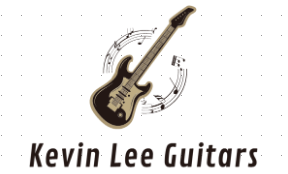Exploring different guitar tunings can significantly expand your musical palette and inspire creativity. Each tuning alters the pitch of the strings, which changes the way chords and scales are played, offering new tonal possibilities. Here are some tips for playing guitar in different tunings:

1. Understand the Basics of Alternate Tunings
Before diving into alternate tunings, it’s crucial to understand standard tuning (E-A-D-G-B-E) thoroughly. This knowledge serves as a foundation, making it easier to transition to and understand the relationships within new tunings.
2. Popular Alternate Tunings
Here are some widely used alternate tunings:
- Drop D (D-A-D-G-B-E): Lowers the sixth string from E to D, creating a heavier sound and making power chords easier to play.
- DADGAD (D-A-D-G-A-D): Often used in Celtic music, it provides a rich, open sound.
- Open G (D-G-D-G-B-D): Favored by blues and slide guitarists, this tuning allows for easy major chord strumming.
- Open D (D-A-D-F#-A-D): Produces a resonant and full sound, great for slide guitar and fingerpicking.
- Half-Step Down (Eb-Ab-Db-Gb-Bb-Eb): Lowers each string by a half step, providing a slightly darker tone, popular in rock and metal.
3. Retuning Your Guitar
When retuning your guitar:
- Use a Tuner: Especially when experimenting with new tunings, a reliable electronic tuner ensures accuracy.
- Adjust Slowly: Turn the tuning pegs gradually to avoid breaking strings.
- Check Intonation: Retuning can affect your guitar’s intonation. Check and adjust it if necessary to maintain proper pitch along the fretboard.
4. Learn Chord Shapes and Scales
Alternate tunings often require different chord shapes and scale patterns. Here are some tips to get started:
- Chords: Learn basic chord shapes in the new tuning. For instance, in Open G, a simple barre across all strings forms a major chord.
- Scales: Familiarize yourself with the major and minor scales in the new tuning. This helps in improvisation and soloing.
5. Practice Switching Between Tunings
Practice changing between tunings to build muscle memory and speed. This skill is particularly useful in live performances where quick transitions may be necessary.
6. Explore Genres and Songs in Different Tunings
Listen to music that uses the alternate tuning you’re experimenting with. This can provide inspiration and practical examples of how the tuning is used. For example:
- Drop D: “Everlong” by Foo Fighters, “Killing in the Name” by Rage Against the Machine.
- DADGAD: “Kashmir” by Led Zeppelin.
- Open G: “Honky Tonk Women” by The Rolling Stones, “She Talks to Angels” by The Black Crowes.
7. Experiment with Capos
Using a capo in combination with alternate tunings can open up even more possibilities. Experiment with placing the capo on different frets to achieve unique sounds and voicings.
8. Practice Fingerpicking and Slide Techniques
Certain tunings lend themselves well to fingerpicking or slide guitar. For instance, open tunings like Open D and Open G are excellent for slide playing. Practice these techniques to take full advantage of the tuning’s capabilities.
9. Adjust Your Playing Style
Alternate tunings can change the tension and feel of the strings. You might need to adjust your playing style, including strumming patterns and finger pressure, to suit the new tuning.
10. Keep a Tuning Notebook
Maintain a notebook to jot down chord shapes, scale patterns, and song ideas in different tunings. This serves as a quick reference and helps you remember your discoveries and compositions.
Conclusion
Exploring different guitar tunings can transform your playing and inspire new musical directions. By understanding the basics, practicing chord shapes and scales, and experimenting with genres and techniques, you can unlock the full potential of alternate tunings. Whether you’re looking to add depth to your compositions or seeking a fresh perspective on familiar songs, alternate tunings offer a world of possibilities for guitarists.




